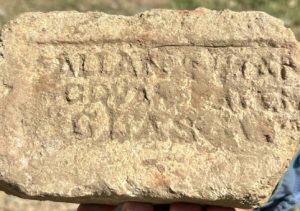Bourtreehill Kilmarnock brick found in Sweden
— 24/07/2024Found by Hans Nilsson in the sea at Furuögrund, Sweden. Hans states – The brick was found in Furuögrund north of Skellefteå. Furuögrund was the port where wood products from the area where produced and shipped. At many places ballast was left. The ballast, usually stone not found in Sweden…like flint and sometimes even a…









